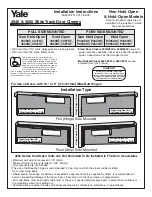
51
Sealing and Venting - Very Important
As soon as the bag is filled seal the finished end of the bag as outlined with the Master Seal instruc-
tions. The sooner oxygen is sealed out, the sooner the fermentation process can begin. It is very
important to vent the bag after sealing. Refer to “Venting The Bag” section of this manual. Order
Master seal and reusable vents from your local Ag-Bag dealer. Refer to the list that follows for spe-
cific part numbers:
- Part Number 42.1500272 - 250 Ft. Roll
- Part Number 42.1500270 - 9.5 Ft. Lengths, 4/Box
- Part Number 42.1500267 - 14.5 Ft. Lengths, 4/Box for 8 & 9 ft. bags
- Part Number 42.1500268 - 17 Ft. Lengths, 4/Box for 10 ft. bags
- Part Number 42.1500269 - 20 Ft. Lengths, 4/Box for 11 & 12 ft. bags
- Part Number 42.1500893 - Reusable bag vent
- Part Number 42.1500568 - Vent installation tool
Protecting the Bag From Wind Damage
Wind damage can be caused by the wind whipping the loose end of the bag. To prevent damage,
the loose bag end needs to be secured with Master Seal and by placing tires or other soft material
on the end of the bag. Wind damage can cause small cracks and eventually wear a hole that allows
air to penetrate, causing feed damage. A tightly secured bag will add to the life of the bag.
Bag Management and Inspection
Periodic inspection of the bag is essential to maintain the oxygen free environment inside the bag.
It is recommended that repairs be made with Ag-Bag mending tape as soon as they are discovered.
Repair tape can be ordered from your local Ag-Bag dealer using the following part numbers:
- Part Number 42.1500523 - 2” x 36 yard roll, 18 rolls per case
- Part Number 42.1500525 - 3” x 36 yard roll, 24 rolls per case
- Part Number 42.1501331 - 4” x 36 yard roll, 18 rolls per case
















































